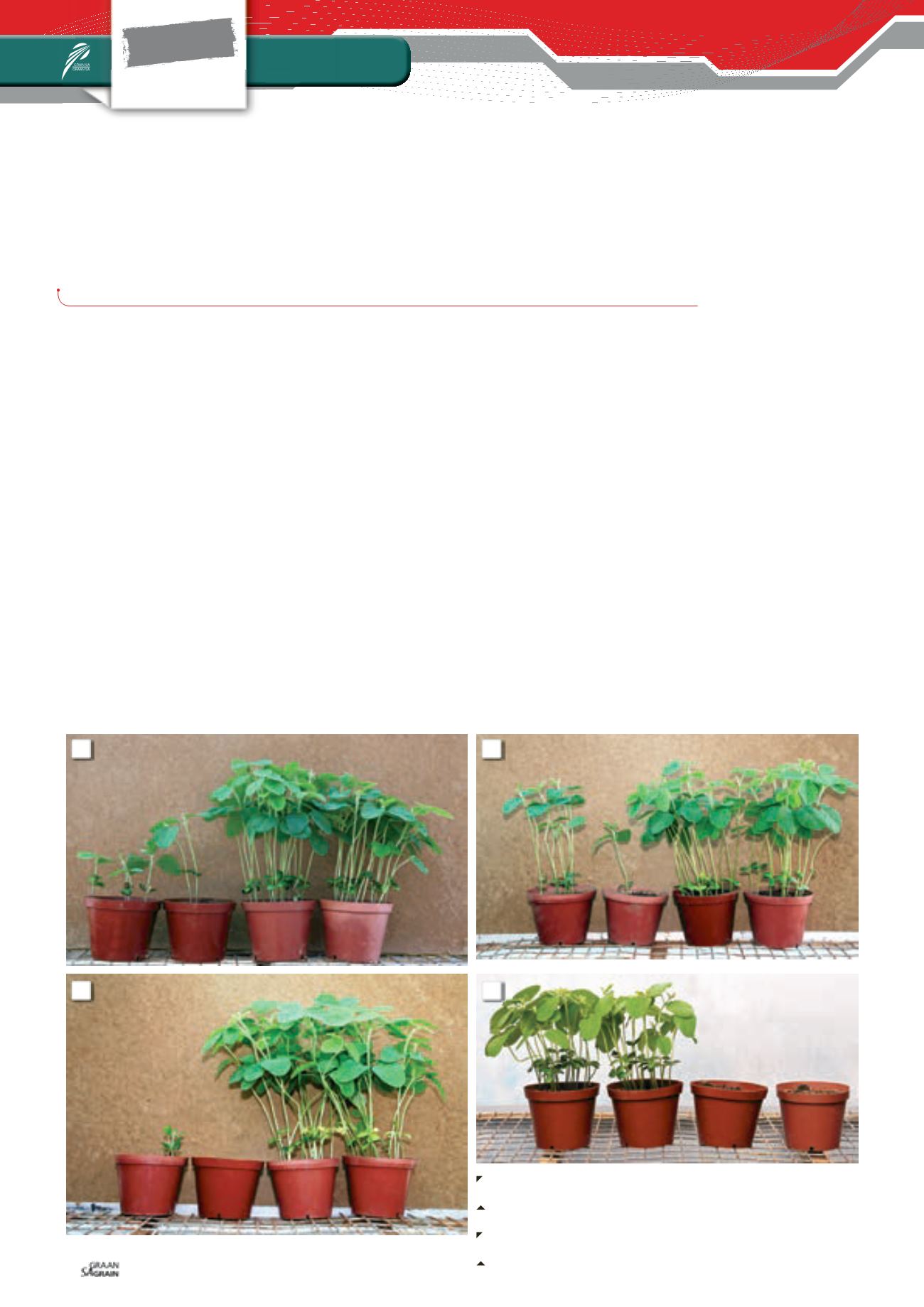

FOCUS
Seed
Special
Maart 2017
58
Soilborne diseases of soybean
and management strategies to control these diseases
S
oybeans are grown in most parts of the world and are a
primary source of vegetable oil and protein. They are also
grown in South Africa and are an important oilseed crop
where approximately one million tons were produced on
687 300 ha during the 2014/2015 growing season.
Soilborne diseases, though, are an economically important con-
straint in soybean production and among the most widely distrib-
uted diseases of soybean. Under field conditions favourable for
disease development, yield losses can be significant.
Several microorganisms have worldwide been associated with
soilborne disease problems in soybean. For example, in the United
States, 38 fungal taxa were isolated from diseased soybean seed-
lings in Mississippi and twelve fungal taxa were isolated in Florida.
In soybean-growing regions of the world,
Fusarium
,
Macrophomi-
na
,
Phytophthora
,
Pythium
,
Rhizoctonia
,
Sclerotium
and
Sclerotinia
are reported among the main fungal genera causing soilborne
diseases.
Surveys
In South Africa, in order to investigate the causal agents of soil-
borne diseases of soybean, we conducted surveys in cultivar trials
and producers’ fields for three years (2010/2011 – 2012/2013 soybean
growing seasons).
The surveys were done in six provinces that were identified as the
most important soybean growing areas. These include the Free
State (Bethlehem, Bothaville, Clocolan and Villiers), KwaZulu-Natal
(Cedara, Dundee, Normandien, Vryheid and Winterton), Limpopo
(Groblersdal and Koedoeskop), Mpumalanga (Delmas, Dirkiesdorp,
Grootvlei, Kinross, Middelburg, Morgenzon and Wonderfontein),
Northern Cape (Vaalharts) and North West Province (Brits, Potchef-
stroom and Rustenburg).
These localities represent three climatic areas, i.e. cool, moderate
and warm. Plant and soil samples were collected thrice from each
cultivar trial or farm: Two weeks after planting, at the flowering and
at the pod filling stages of soybean plants.
Most important pathogens
In order to determine the importance of soilborne diseases, bioas-
says were conducted under glasshouse conditions. In the glass-
house bioassays, the soil collected from each area was split into
two and one part was pasteurised in order to eliminate soilborne
fungal pathogens (the biological component of the soil) in the soil
while the second part was left untreated.
YARED TEWOLDEMEDHIN
and
SANDRA LAMPRECHT,
ARC-Plant Protection Research Institute (PPRI), Stellenbosch
1: Soybean seedlings planted in pasteurised and non-pasteurised soil
collected from a soybean field.
2: Soybean seedlings planted in pasteurised soil inoculated with
Fusarium solani
under glasshouse conditions.
3: Soybean seedlings planted in pasteurised soil inoculated with
Pythium aphanidermatum
under glasshouse conditions.
4: Soybean seedlings planted in pasteurised soil inoculated with
Rhizoctonia solani
AG-4 HGIII under glasshouse conditions.
1
3
2
4
Non-pasteurised
P. aphanidermatum
Control
F. solani
Pasteurised
Control
R. solani
AG-4 HGIII
Control

















